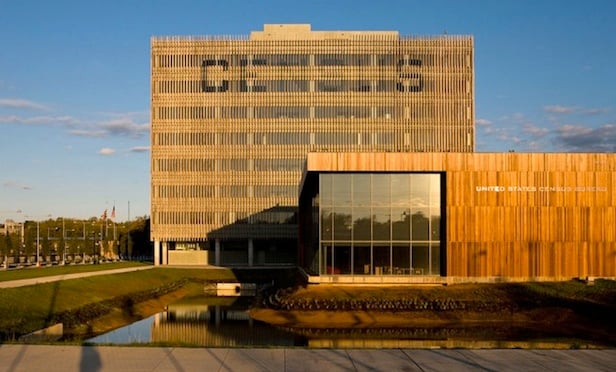 Housing starts and permits both declined in March, according to Census Bureau data. (Photo courtesy of HKS Architects)
Housing starts and permits both declined in March, according to Census Bureau data. (Photo courtesy of HKS Architects)
WASHINGTON, DC—New starts on both multifamily and single-family construction slipped more than expected in March, declining 8.8% overall from an upwardly revised February level, according to Census Bureau figures released Tuesday. The annualized rate of 1.09 million starts came in below the median estimate of 1.166 million from economists polled by Bloomberg Business. However, on a year-over-year basis single-family starts are up by double-digit figures.
“Single-family starts are off from their strong showing in February but this slowdown represents a return to a long-run, gradual growth trend that is consistent with builder confidence levels, which are overall positive,” says Robert Dietz, chief economist with the National Association of Home Builders. “While we are also seeing a monthly decline on the multifamily front, multifamily construction is expected to level off at a solid rate given the high level of rental housing demand.”
March saw privately owned single-family starts decline by 9.2% from the previous month, while new multifamily builds were off 7.7% from February. On a trailing three-month basis, multifamily starts have declined for six of the past seven months, while the trend has been more positive for single-family.
A similar trend can be seen in permits, where the decline was greater for apartments than for single-family homes. Permits for single-family builds dipped 1.2% to a seasonally adjusted annual rate of 727,000, while the monthly decline for multifamily permits was more than 20% to 324,000—the lowest level since August 2013—from February’s level of 408,000.
NAHB said Monday that builder confidence in the market for newly built single-family homes remained unchanged at 58 in the most recent National Association of Home Builders/Wells Fargo Housing Market Index. The HMI components measuring sales expectations in the next six months rose one point to 62, and the index gauging buyer traffic also increased a single point to 44. Meanwhile, the component charting current sales conditions fell two points to 63. “Builders remain cautiously optimistic about construction growth in 2016,” says Dietz.

















 Copyright © 2024 ALM Global, LLC. All Rights Reserved.
Copyright © 2024 ALM Global, LLC. All Rights Reserved.